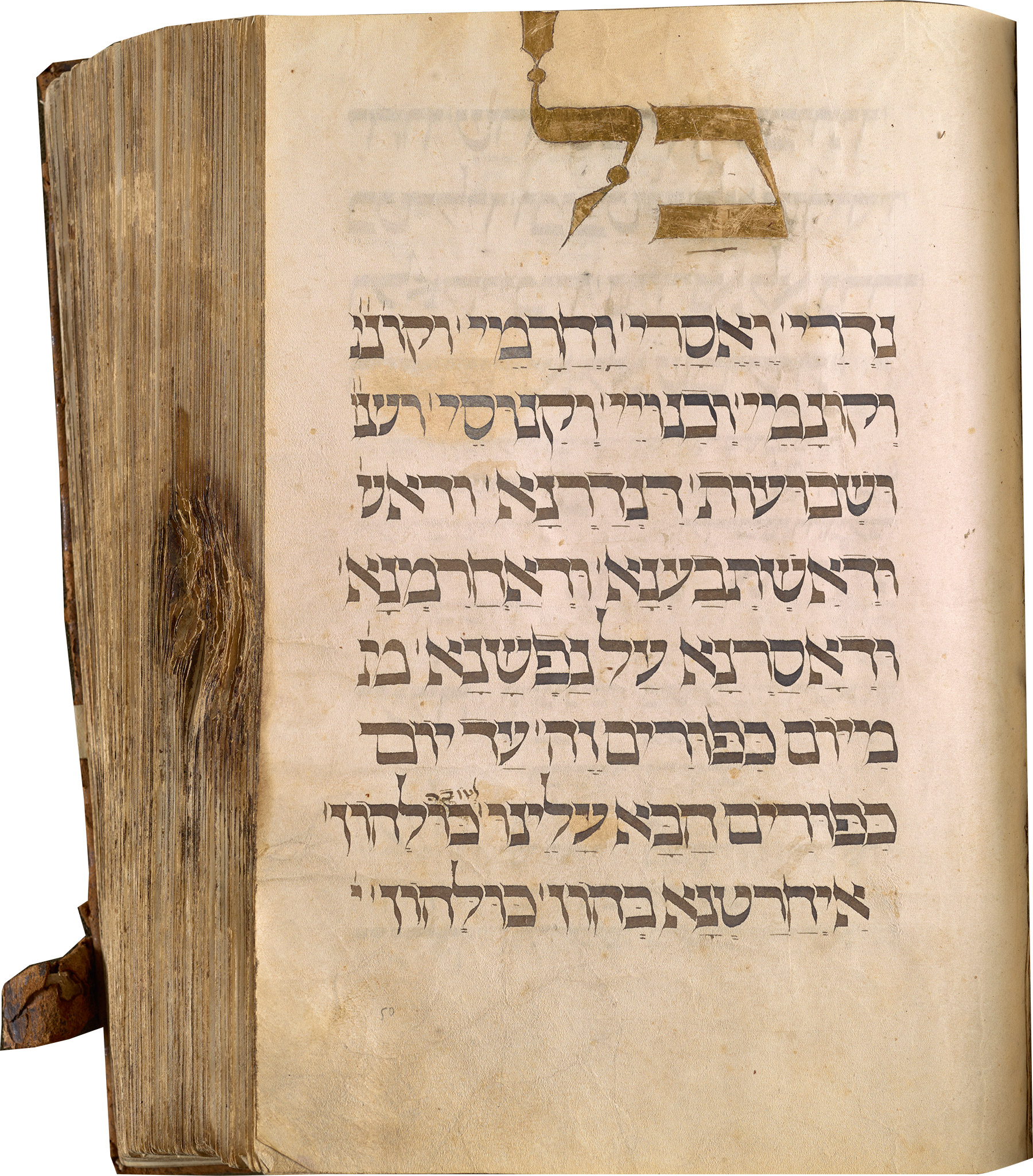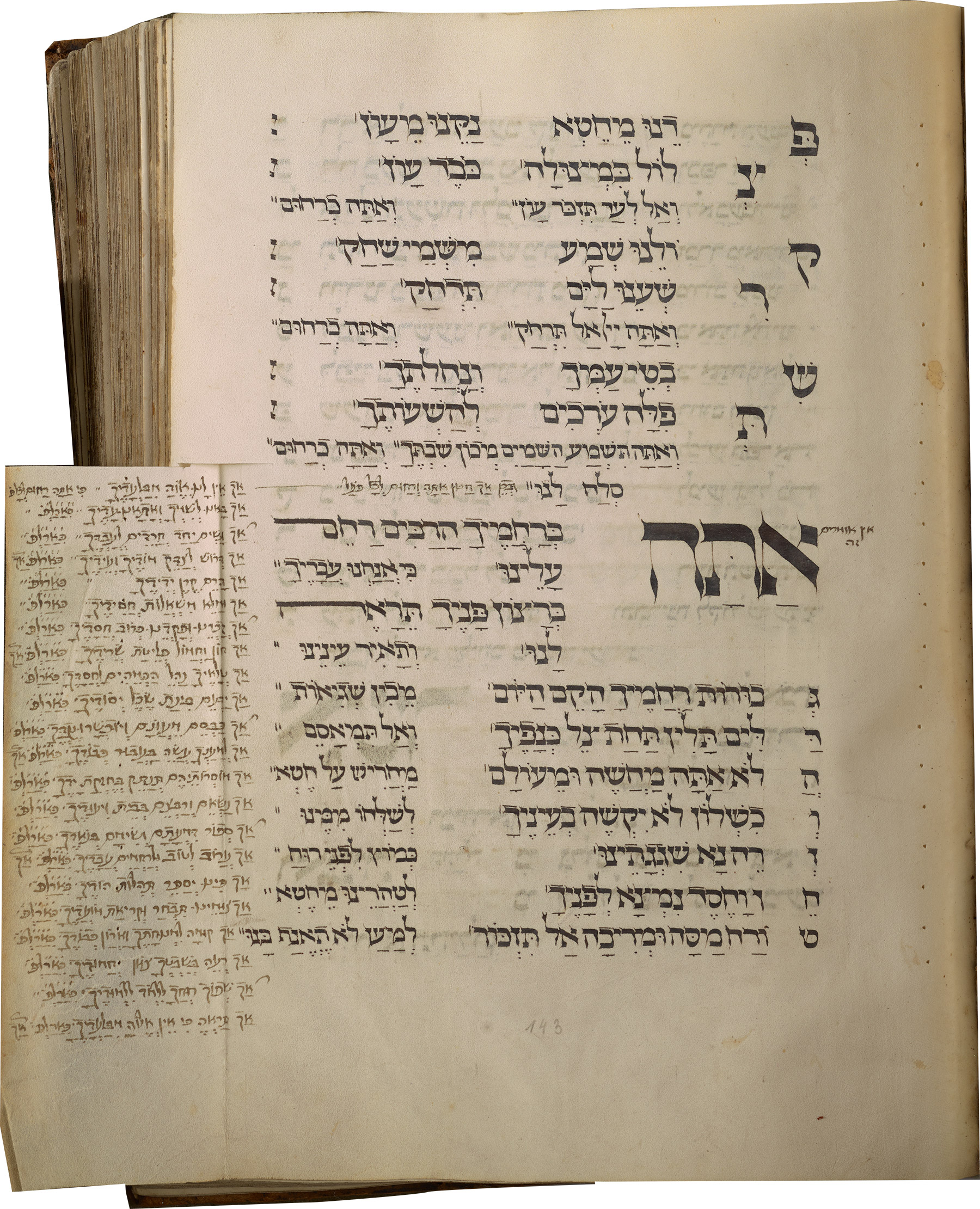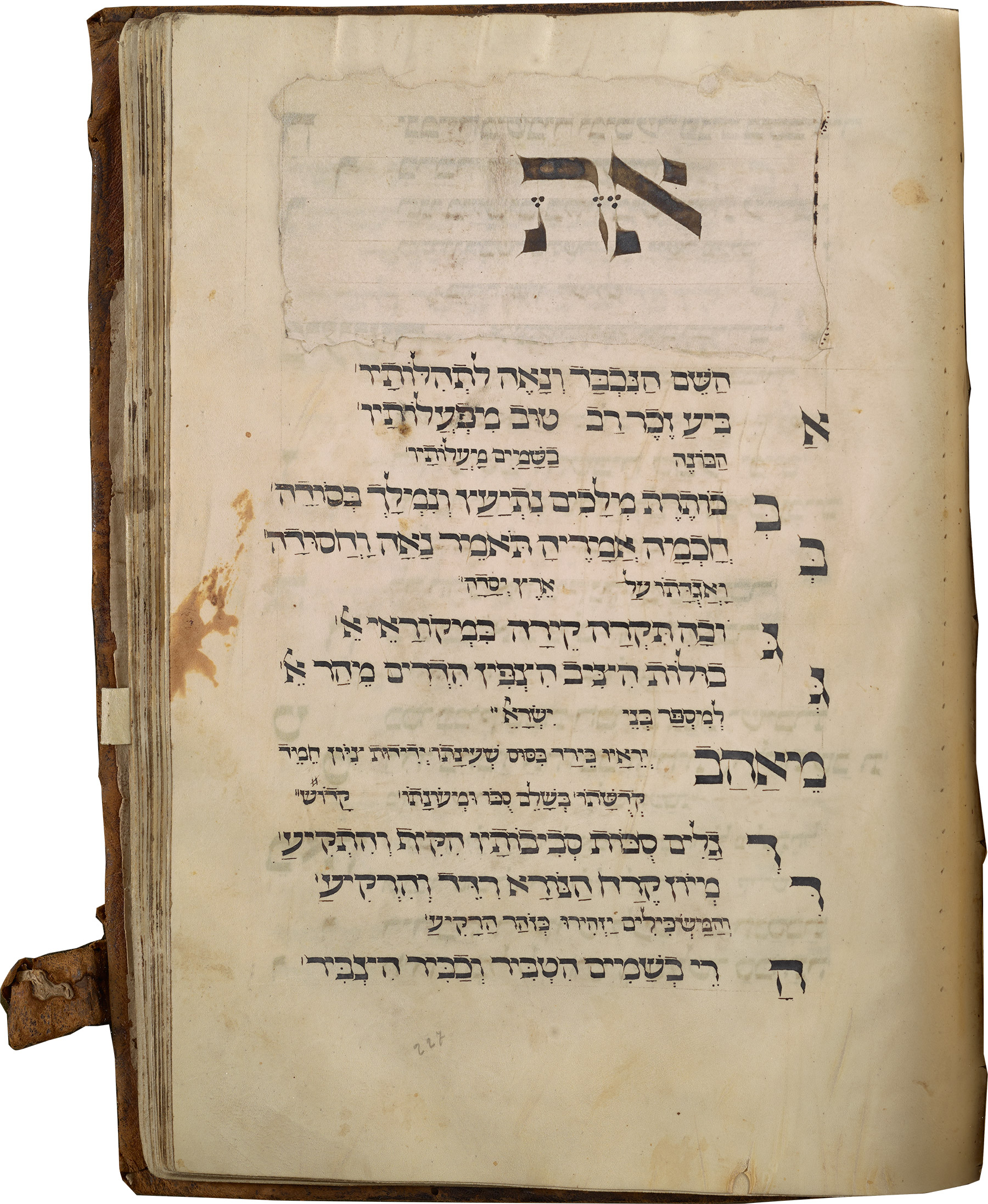Rare ms. 382 in the collection of the Library at the Katz Center for Advanced Judaic Studies is a mahzor (festive prayerbook) for the autumn holidays according to the Western Ashkenazic rite. It was copied during the fourteenth century, probably in the Rhineland area of southern Germany and northern Italy. It contains the liturgical poetry (piyyutim) recited in the synagogue on both days of Rosh ha-shanah, on Yom Kippur, on the first and second day of Sukkot, the intermediate Sabbath during Sukkot and on Shemini Atseret, but it lacks most of the standard prayers said on these occasions because the precentor would have known these by heart. Today, the volume is incomplete, beginning with musaf (the additional prayers) recited on the first day of Rosh ha-shanah and ending with musaf on Shemini Atseret. In its complete form it would have contained more than 280 folio leaves (rather than the extant 252 folios). In addition to at least two quires missing at the beginning and one quire missing at the end, several pages have been cut out of the manuscript. The manuscript was rebound in (early) modern times and apparently after that was damaged, probably by fire.
During the thirteenth and fourteenth centuries, several changes took place in the production of liturgical manuscripts in Ashkenaz that influenced both the selection of texts and the appearance of the texts on the page. Notwithstanding unifying tendencies, many communities retained their local traditions about which piyyutim to say when, as mirrored by the unusual ordering of yotsrot for Sukkot in the Katz Center's mahzor. Most textual changes that spread throughout many communities pertain to the omission of piyyutim, e.g. many communities decided to abbreviate the recitation of qedushta'ot, the complex compositions adorning the Amidah on Sabbaths and holidays, by skipping parts of the rehitim, the series of highly structured poems in the penultimate position of the qedushta, especially on the high holidays when many piyyutim were recited. The mahzor of the Katz Center displays a selection that is largely in accordance with later habits, although in one case a piyyut that had been omitted by the original scribe was added on the margins by an almost contemporary hand (f. 143r). This note was preserved when the margins were cut at a later time, suggesting that the community using the mahzor continued to recite this piyyut. Interestingly, the mahzor does not share another textual change of the late thirteenth, early fourteenth century, namely the omission of the strings of verses inserted into the first three piyyutim of qedushta'ot, although it rarely contains more than three or four verses, even though earlier manuscripts may have up to seven or eight verses in each string.
Among the piyyutim retained by the original scribe were two anti-Christian piyyutim in the rehitim for shaharit on Yom Kippur that would have appealed to the Jewish communities in Ashkenaz in the thirteenth and fourteenth centuries who could use the liturgy to express their antagonism to Christianity in times of growing tension, but apparently these piyyutim were considered to be superfluous or even dangerous at a later time, when the leafs containing this piyyutim were cut from the mahzor (f. 105 and 108). Only one occasion of the Aleynu is censored (by erasure) while another occasion of the same text was not changed. It is not possible to reconstruct when this drastic measure was taken, nor whether it is a case of self-censure or due only to outside pressure. Cutting out the piyyutim was eased by the selective recitation of rehitim that began in the thirteenth and fourteenth centuries and had led to the omission of some rehitim from the manuscript.
The aesthetic changes in the visual appearance of liturgical manuscripts in Ashkenaz developed during the thirteenth and early fourteenth centuries. Changes in parchment manufacturing brought about a more generous layout with lavish margins, ample space between the lines, sumptuous initial words and


